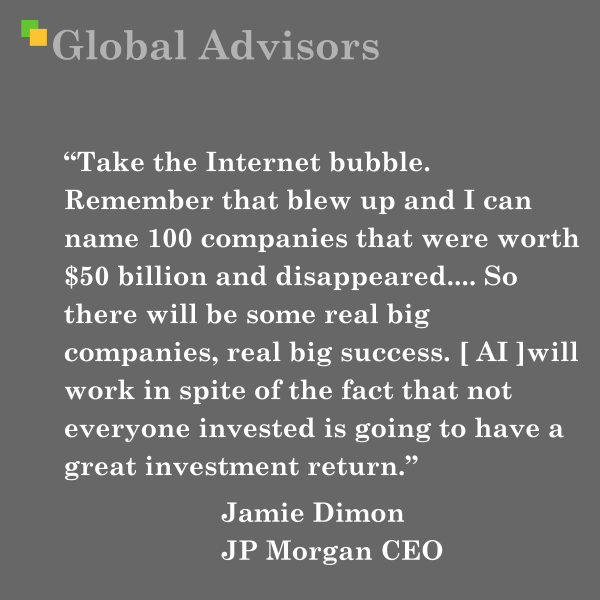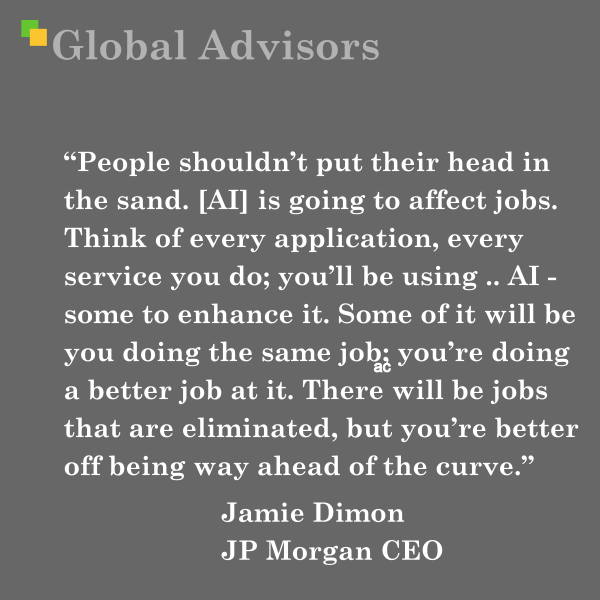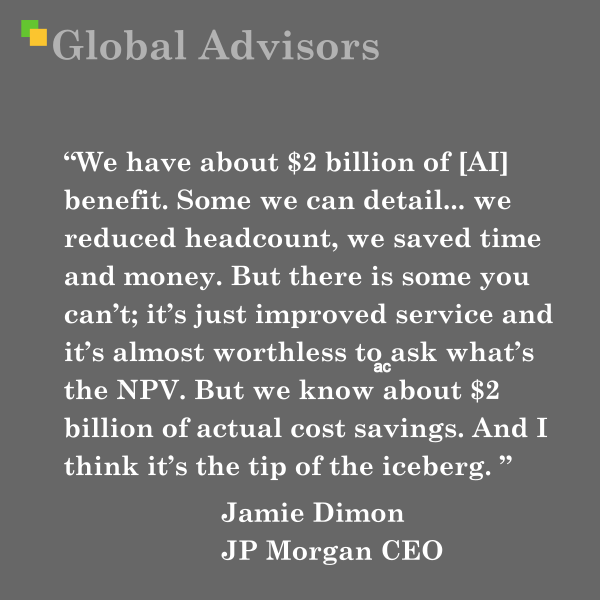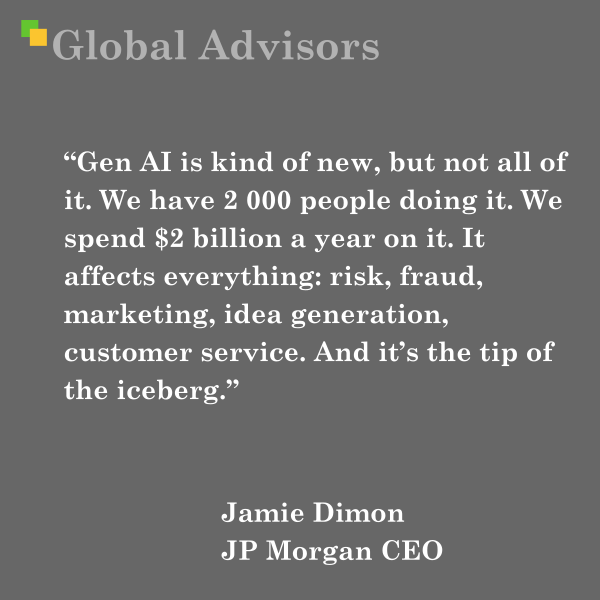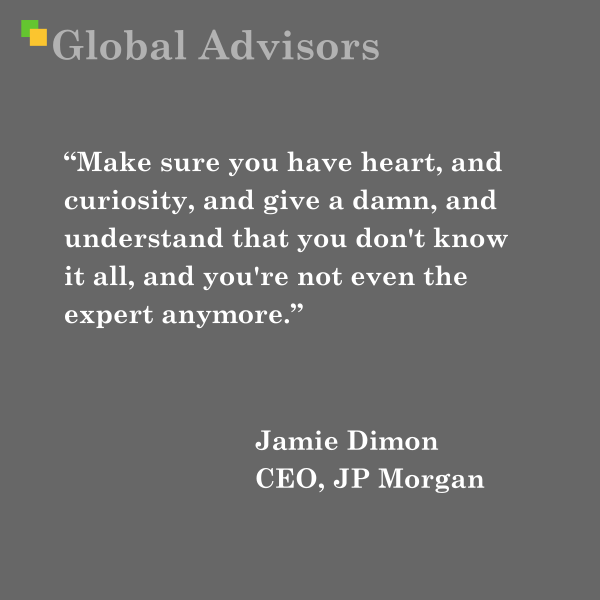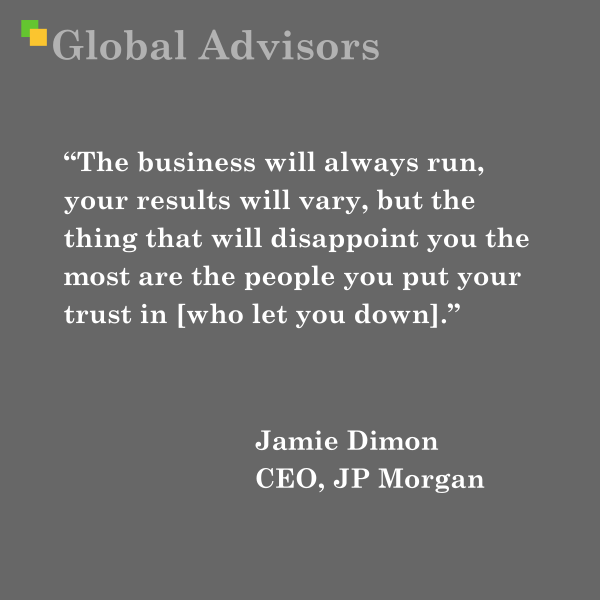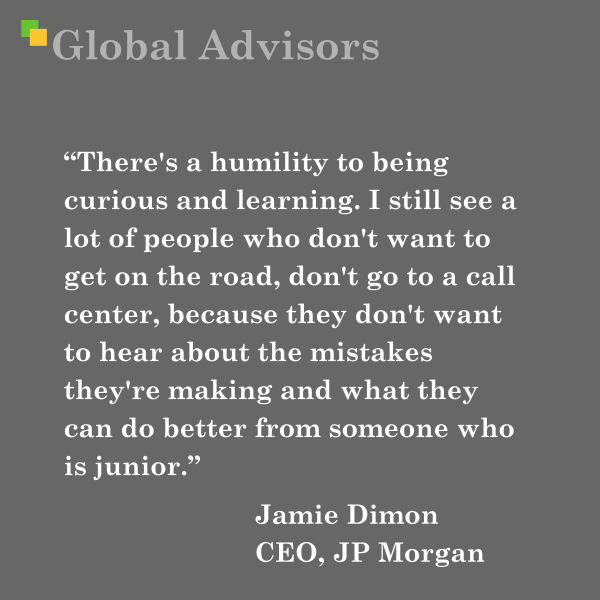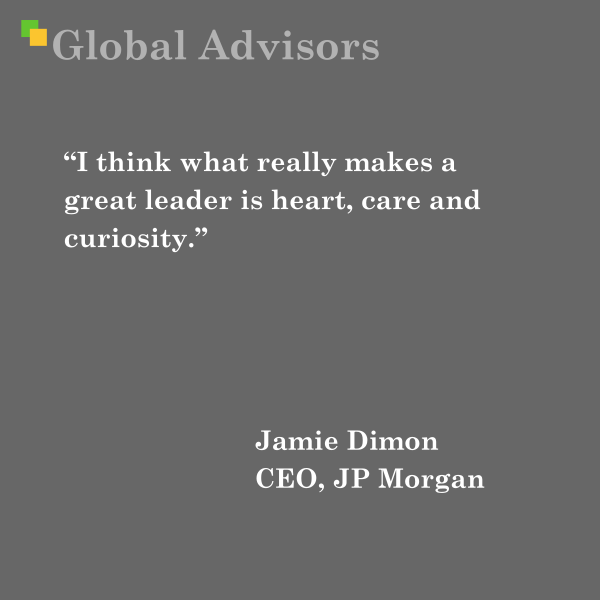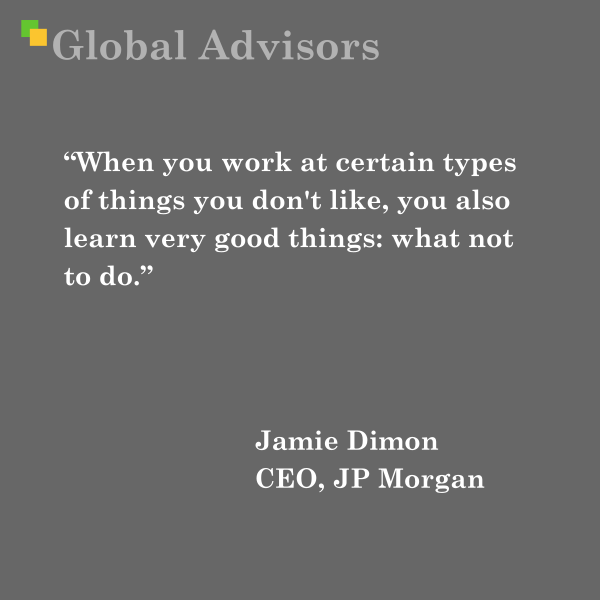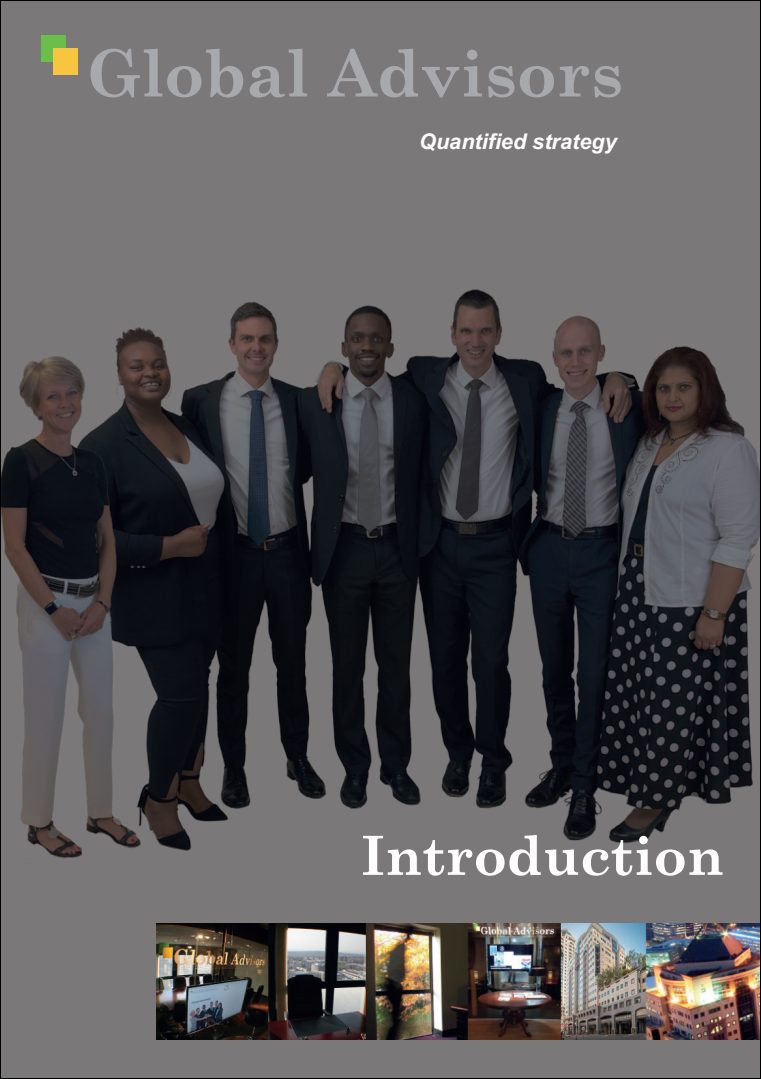“Take the Internet bubble. Remember that blew up and I can name 100 companies that were worth $50 billion and disappeared…. So there will be some real big companies, real big success. [ AI ]will work in spite of the fact that not everyone invested is going to have a great investment return.” – Jamie Dimon, CEO JP Morgan Chase
Jamie Dimon’s observation about artificial intelligence investment echoes his experience witnessing the dot-com bubble’s collapse at the turn of the millennium—a period when he was navigating his own career transition from Citigroup to Bank One. Speaking to Bloomberg in London during October 2025, the JPMorgan Chase chairman drew upon decades of observing technological disruption to contextualise the extraordinary capital deployment currently reshaping the AI landscape. His commentary serves as a measured counterpoint to the euphoria surrounding generative artificial intelligence, reminding investors that transformative technologies invariably produce both spectacular winners and catastrophic losses.
The Speaker: Institutional Banking’s Preeminent Figure
Jamie Dimon has commanded JPMorgan Chase since 2006, transforming it into America’s largest bank by assets whilst establishing himself as Wall Street’s most influential voice. His journey to this position began in 1982 when he joined American Express as an assistant to Sandy Weill, embarking upon what would become one of the most consequential partnerships in American finance. For sixteen years, Dimon and Weill orchestrated a series of acquisitions that built Travelers Group into a financial services colossus, culminating in the 1998 merger with Citicorp to form Citigroup.
The relationship ended abruptly that same year when Weill asked Dimon to resign—a decision Weill later characterised as regrettable to The New York Times. The ouster proved fortuitous. In 2000, Dimon assumed leadership of Bank One, a struggling Chicago-based institution he successfully revitalised. When JPMorgan acquired Bank One in 2004, Dimon became president and chief operating officer before ascending to chief executive two years later. Under his stewardship, JPMorgan’s stock value has tripled, and in 2023 the bank recorded the largest annual profit in US banking history at nearly $50 billion.
Dimon’s leadership during the 2008 financial crisis distinguished him amongst his peers. Whilst competitors collapsed or required government rescue, JPMorgan emerged strengthened, acquiring Bear Stearns and Washington Mutual. He reprised this role during the 2023 regional banking crisis, coordinating an industry response that saw eleven major banks contribute $30 billion to stabilise First Republic Bank. This pattern of crisis management has positioned him as what analyst Mike Mayo termed “a senior statesperson” for the financial industry.
Beyond banking, Dimon maintains substantial political engagement. Having donated over $500,000 to Democratic candidates between 1989 and 2009, he has since adopted a more centrist posture, famously declaring to CNBC in 2019 that “my heart is Democratic, but my brain is kind of Republican”. He served briefly on President Trump’s business advisory council in 2017 and has repeatedly faced speculation about presidential ambitions, confirming in 2016 he would “love to be president” whilst acknowledging the practical obstacles. In 2024, he endorsed Nikki Haley in the Republican primary before speaking positively about Trump following Haley’s defeat.
The Technological Context: AI’s Investment Frenzy
Dimon’s October 2025 remarks addressed the extraordinary capital deployment underway in artificial intelligence infrastructure. His observation that approximately $1 trillion in AI-related spending was occurring “this year” encompasses investments by hyperscalers—the massive cloud computing providers—alongside venture capital flowing to companies like OpenAI, which despite substantial losses continues attracting vast sums. This investment boom has propelled equity markets into their third consecutive year of bull-market conditions, with asset prices reaching elevated levels and credit spreads compressing to historical lows.
At JPMorgan itself, Dimon revealed the bank has maintained systematic AI investment since 2012, allocating $2 billion annually and employing 2,000 specialists dedicated to the technology. The applications span risk management, fraud detection, marketing, customer service, and software development, with approximately 150,000 employees weekly utilising the bank’s internal generative AI tools. Crucially, Dimon reported achieving rough parity between the $2 billion expenditure and measurable benefits—a ratio he characterised as “the tip of the iceberg” given improvements in service quality that resist quantification.
His assessment that AI “will affect jobs” reflects the technology’s capacity to eliminate certain roles whilst enhancing others, though he expressed confidence that successful deployment would generate net employment growth at JPMorgan through retraining and redeployment programmes. This pragmatic stance—neither utopian nor dystopian—typifies Dimon’s approach to technological change: acknowledge disruption candidly whilst emphasising adaptive capacity.
The Dot-Com Parallel: Lessons from Previous Technological Euphoria
Dimon’s reference to the Internet bubble carries particular resonance given his vantage point during that era. In 1998, whilst serving as Citigroup’s president, he witnessed the NASDAQ’s ascent to unsustainable valuations before the March 2000 collapse obliterated trillions in market capitalisation. His claim that he could “name 100 companies that were worth $50 billion and disappeared” speaks to the comprehensive destruction of capital that accompanied the bubble’s deflation. Companies such as Pets.com, Webvan, and eToys became cautionary tales—businesses predicated upon sound concepts executed prematurely or inefficiently, consuming vast investor capital before failing entirely.
Yet from this wreckage emerged the digital economy’s defining enterprises. Google, incorporated in 1998, survived the downturn to become the internet’s primary gateway. Facebook, founded in 2004, built upon infrastructure and lessons from earlier social networking failures. YouTube, established in 2005, capitalised on broadband penetration that earlier video platforms lacked. Dimon’s point—that “there will be some real big companies, real big success” emerging from AI investment despite numerous failures—suggests that capital deployment exceeding economically optimal levels nonetheless catalyses innovation producing enduring value.
This perspective aligns with economic theories recognising that technological revolutions characteristically involve overshoot. The railway boom of the 1840s produced excessive track mileage and widespread bankruptcies, yet established transportation infrastructure enabling subsequent industrialisation. The telecommunications bubble of the late 1990s resulted in overbuilt fibre-optic networks, but this “dark fibre” later supported broadband internet at marginal cost. Dimon’s observation that technological transitions prove “productive” in aggregate “in spite of the fact that not everyone invested is going to have a great investment return” captures this dynamic: society benefits from infrastructure investment even when investors suffer losses.
Schumpeterian Creative Destruction and Technological Transition
Joseph Schumpeter’s concept of creative destruction provides theoretical foundation for understanding the pattern Dimon describes. Writing in Capitalism, Socialism and Democracy (1942), Schumpeter argued that capitalism’s essential characteristic involves “the process of industrial mutation that incessantly revolutionises the economic structure from within, incessantly destroying the old one, incessantly creating a new one.” This process necessarily produces winners and losers—incumbent firms clinging to obsolete business models face displacement by innovators exploiting new technological possibilities.
Schumpeter emphasised that monopolistic competition amongst innovators drives this process, with entrepreneurs pursuing temporary monopoly rents through novel products or processes. The expectation of extraordinary returns attracts excessive capital during technology booms, funding experiments that collectively advance knowledge even when individual ventures fail. This mechanism explains why bubbles, whilst financially destructive, accelerate technological diffusion: the availability of capital enables rapid parallel experimentation impossible under conservative financing regimes.
Clayton Christensen’s theory of disruptive innovation, elaborated in The Innovator’s Dilemma (1997), complements Schumpeter’s framework by explaining why established firms struggle during technological transitions. Christensen observed that incumbent organisations optimise for existing customer needs and established value networks, rendering them structurally incapable of pursuing initially inferior technologies serving different markets. Entrants unburdened by legacy systems and customer relationships therefore capture disruptive innovations’ benefits, whilst incumbents experience declining relevance.
Dimon’s acknowledgement that “there will be jobs that are eliminated” whilst predicting net employment growth at JPMorgan reflects these dynamics. Artificial intelligence constitutes precisely the type of general-purpose technology that Christensen’s framework suggests will restructure work organisation. Routine tasks amenable to codification face automation, requiring workforce adaptation through “retraining and redeployment”—the organisational response Dimon describes JPMorgan implementing.
Investment Cycles and Carlota Pérez’s Technological Surges
Carlota Pérez’s analysis in Technological Revolutions and Financial Capital (2002) offers sophisticated understanding of the boom-bust patterns characterising technological transitions. Pérez identifies a consistent sequence: technological revolutions begin with an “irruption” phase as entrepreneurs exploit new possibilities, followed by a “frenzy” phase when financial capital floods in, creating asset bubbles disconnected from productive capacity. Inevitable crash precipitates a “synergy” phase when surviving innovations diffuse broadly, enabling a “maturity” phase of stable growth until the next technological revolution emerges.
The dot-com bubble exemplified Pérez’s frenzy phase—capital allocated indiscriminately to internet ventures regardless of business fundamentals, producing the NASDAQ’s March 2000 peak before three years of decline. The subsequent synergy phase saw survivors like Amazon and Google achieve dominance whilst countless failures disappeared. Dimon’s reference to “100 companies that were worth $50 billion and disappeared” captures the frenzy phase’s characteristic excess, whilst his citation of “Facebook, YouTube, Google” represents the synergy phase’s enduring value creation.
Applying Pérez’s framework to artificial intelligence suggests current investment levels—the $1 trillion deployment Dimon referenced—may indicate the frenzy phase’s advanced stages. Elevated asset prices, compressed credit spreads, and widespread investor enthusiasm traditionally precede corrections enabling subsequent consolidation. Dimon’s observation that he remains “a long-term optimist” whilst cautioning that “asset prices are high” reflects precisely the ambivalence appropriate during technological transitions’ financial euphoria: confidence in transformative potential tempered by recognition of valuation excess.
Hyman Minsky’s Financial Instability Hypothesis
Hyman Minsky’s financial instability hypothesis, developed throughout the 1960s and 1970s, explains the endogenous generation of financial fragility during stable periods. Minsky identified three financing postures: hedge finance, where cash flows cover debt obligations; speculative finance, where near-term cash flows cover interest but not principal, requiring refinancing; and Ponzi finance, where cash flows prove insufficient even for interest, necessitating asset sales or further borrowing to service debt.
Economic stability encourages migration from hedge toward speculative and ultimately Ponzi finance as actors’ confidence increases. During technological booms, this migration accelerates—investors fund ventures lacking near-term profitability based upon anticipated future cash flows. The dot-com era witnessed classic Ponzi dynamics: companies burning capital quarterly whilst promising eventual dominance justified continued financing. When sentiment shifted, refinancing evaporated, triggering cascading failures.
Dimon’s comment that “not everyone invested is going to have a great investment return” implicitly acknowledges Minskian dynamics. The $1 trillion flowing into AI infrastructure includes substantial speculative and likely Ponzi finance—investments predicated upon anticipated rather than demonstrated cash flows. OpenAI’s losses despite massive valuation exemplify this pattern. Yet Minsky recognised that such dynamics, whilst generating financial instability, also fund innovation exceeding levels conservative finance would support. Society gains from experiments capital discipline would preclude.
Network Effects and Winner-Take-All Dynamics
The persistence of “real big companies, real big success” emerging from technological bubbles reflects network effects characteristic of digital platforms. Economist W. Brian Arthur’s work on increasing returns demonstrated that technologies exhibiting positive feedback—where adoption by some users increases value for others—tend toward monopolistic market structures. Each additional Facebook user enhances the platform’s value to existing users, creating barriers to competitor entry that solidify dominance.
Carl Shapiro and Hal Varian’s Information Rules (1998) systematically analysed information goods’ economics, emphasising that near-zero marginal costs combined with network effects produce natural monopolies in digital markets. This explains why Google commands search, Amazon dominates e-commerce, and Facebook controls social networking despite numerous well-funded competitors emerging during the dot-com boom. Superior execution combined with network effects enabled these firms to achieve sustainable competitive advantage.
Artificial intelligence exhibits similar dynamics. Training large language models requires enormous capital and computational resources, but deploying trained models incurs minimal marginal cost. Firms achieving superior performance attract users whose interactions generate data enabling further improvement—a virtuous cycle competitors struggle to match. Dimon’s prediction of “some real big companies, real big success” suggests he anticipates winner-take-all outcomes wherein a handful of AI leaders capture disproportionate value whilst numerous competitors fail.
Public Policy Implications: Industrial Policy and National Security
During the Bloomberg interview, Dimon addressed the Trump administration’s emerging industrial policy, particularly regarding strategic industries like rare earth minerals and semiconductor manufacturing. His endorsement of government support for MP Materials—a rare earth processor—reveals pragmatic acceptance that national security considerations sometimes warrant departure from pure market principles. This stance reflects growing recognition that adversarial competition with China necessitates maintaining domestic production capacity in strategically critical sectors.
Dani Rodrik’s work on industrial policy emphasises that whilst governments possess poor records selecting specific winners, they can effectively support broad technological capabilities through coordinated investment in infrastructure, research, and human capital. Mariana Mazzucato’s The Entrepreneurial State (2013) documents government’s crucial role funding high-risk innovation underlying commercial technologies—the internet, GPS, touchscreens, and voice recognition all emerged from public research before private commercialisation.
Dimon’s caution that industrial policy must “come with permitting” and avoid “virtue signalling” reflects legitimate concerns about implementation quality. Subsidising industries whilst maintaining regulatory barriers preventing their operation achieves nothing—a pattern frustrating American efforts to onshore manufacturing. His emphasis on “long-term purchase agreements” as perhaps “the most important thing” recognises that guaranteed demand reduces risk more effectively than capital subsidies, enabling private investment that government funding alone cannot catalyse.
Market Conditions and Forward-Looking Concerns
Dimon’s October 2025 assessment of macroeconomic conditions combined optimism about continued expansion with caution regarding inflation risks. His observation that “consumers are still okay” because of employment—”jobs, jobs, jobs”—identifies the crucial variable determining economic trajectory. Consumer spending constitutes approximately 70% of US GDP; sustained employment supports spending even as other indicators suggest vulnerability.
Yet his expression of being “a little more nervous about inflation not coming down like people expect” challenges consensus forecasts anticipating Federal Reserve interest rate cuts totalling 100 basis points over the subsequent twelve months. Government spending—which Dimon characterised as “inflationary”—combined with potential supply-side disruptions from tariffs could reverse disinflationary trends. Should inflation prove stickier than anticipated, the Fed would face constraints limiting monetary accommodation, potentially triggering the 2026 recession Dimon acknowledged “could happen.”
This assessment demonstrates Dimon’s characteristic refusal to offer false certainty. His acknowledgement that forecasts “have almost always been wrong, and the Fed’s been wrong too” reflects epistemic humility appropriate given macroeconomic forecasting’s poor track record. Rather than pretending precision, he emphasises preparedness: “I hope for the best, plan for the worst.” This philosophy explains JPMorgan’s consistent outperformance—maintaining sufficient capital and liquidity to withstand adverse scenarios whilst remaining positioned to exploit opportunities competitors’ distress creates.
Leadership Philosophy and Organisational Adaptation
The interview revealed Dimon’s approach to deploying artificial intelligence throughout JPMorgan’s operations. His emphasis that “every time we meet as a business, we ask, what are you doing that we could do to serve your people?” reflects systematic organisational learning rather than top-down technology imposition. This methodology—engaging managers to identify improvement opportunities rather than mandating specific implementations—enables bottom-up innovation whilst maintaining strategic coherence.
Dimon’s observation that “as managers learn how to do it, they’re asking more questions” captures the iterative process through which organisations absorb disruptive technologies. Initial deployments generate understanding enabling more sophisticated applications, creating momentum as possibilities become apparent. The statistic that 150,000 employees weekly utilise JPMorgan’s internal AI tools suggests successful cultural embedding—technology adoption driven by perceived utility rather than compliance.
This approach contrasts with common patterns wherein organisations acquire technology without changing work practices, yielding disappointing returns. Dimon’s insistence on quantifying benefits—”we have about $2 billion of benefit” matching the $2 billion expenditure—enforces accountability whilst acknowledging that some improvements resist measurement. The admission that quantifying “improved service” proves difficult “but we know” it occurs reflects sophisticated understanding that financial metrics capture only partial value.
Conclusion: Technological Optimism Tempered by Financial Realism
Jamie Dimon’s commentary on artificial intelligence investment synthesises his extensive experience navigating technological and financial disruption. His parallel between current AI enthusiasm and the dot-com bubble serves not as dismissal but as realistic framing—transformative technologies invariably attract excessive capital, generating both spectacular failures and enduring value creation. The challenge involves maintaining strategic commitment whilst avoiding financial overextension, deploying technology systematically whilst preserving adaptability, and pursuing innovation whilst managing risk.
His perspective carries weight because it emerges from demonstrated judgement. Having survived the dot-com collapse, steered JPMorgan through the 2008 crisis, and maintained the bank’s technological competitiveness across two decades, Dimon possesses credibility competitors lack. When he predicts “some real big companies, real big success” whilst cautioning that “not everyone invested is going to have a great investment return,” the statement reflects neither pessimism nor hype but rather accumulated wisdom about how technological revolutions actually unfold—messily, expensively, destructively, and ultimately productively.
